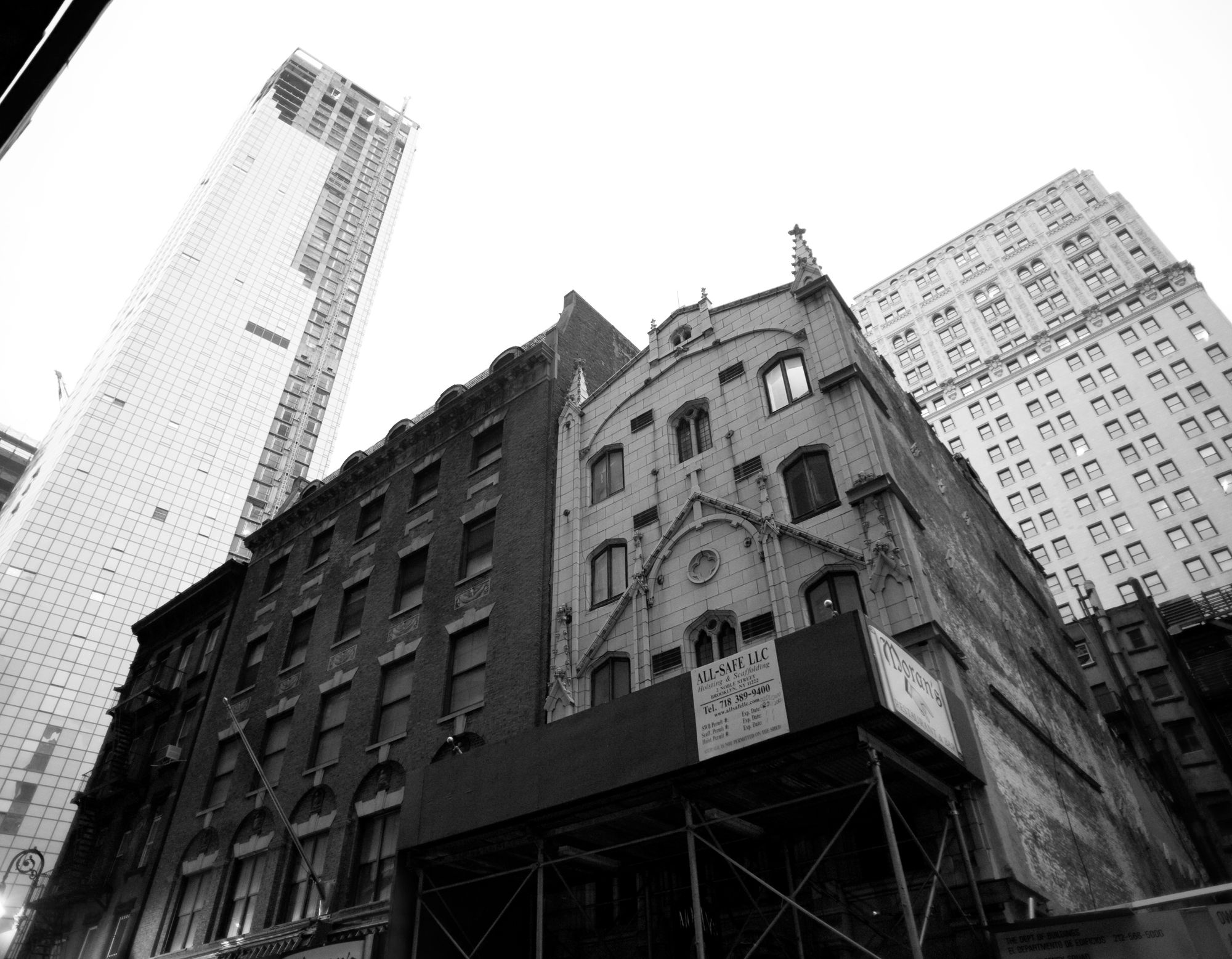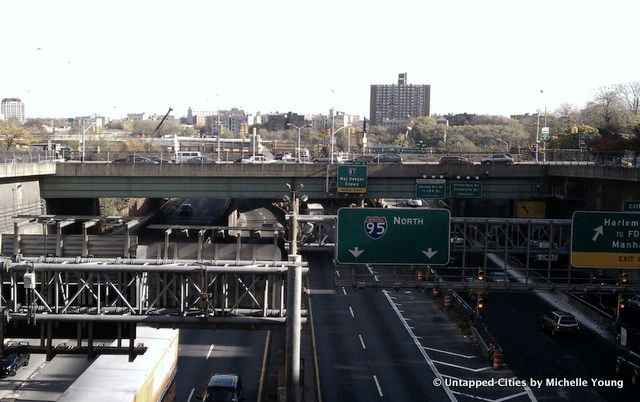Last-Minute NYC Holiday Gift Guide 🎁
We’ve created a holiday gift guide with presents for the intrepid New Yorker that should arrive just in time—



Cover of the “Lincoln Square Slum Clearance Plan.” Image from New York Public Library.
Yesterday, we covered 10 buildings that refused to be demolished in the face of development. These spunky buildings (and the people who lived in or owned them, of course), make for some of the best New York City stories. Sometimes however, whole neighborhoods get lost in New York. Many have made way for some of New York City’s most famous neighborhoods, but today we’re highlighting some of the stories and people who once traversed the streets daily.

Radio Row. Photo from New York Public Library
In the shadow of the original World Trade Center was Radio Row, a jumbled 13-block neighborhood packed to the gills with radio stores for retail and repair, surplus parts, and hardware stores, rounded out with clothing shops, jewelers, stationery and more. Looking back, it’s what urban planners now a days might use as an example of great, activated streets, with some enterprising retailers selling their wares in the middle of the road as well.
Eminent domain was used evict and buy out the retailers and approximately 100 residents of Radio Row, who fought back with protests and lawsuits. But the wheel of New York City’s urban development and renewal was too strong in the 1960s and eventually the entire area was cleared for the new World Trade Center site.

Photo by Christoffer Delsinger for Untapped Cities
Not too far away on Washington Street was “Little Syria,”
the first Arabic-speaking immigrant base in the United States and home to at least 27 different nationalities between 1880 and 1940. It’s hard to imagine so much packed into the 6-block neighborhood, but such was immigrant life near the New York City dockyards. Two critical developments ensured the end of Little Syria: the construction of the Brooklyn-Battery Tunnel in 1946 and then the World Trade Center. Conveniently for Robert Moses, the approach to the tunnel could conveniently be placed right where the neighborhood was. Today, you can still see bits and pieces of the neighborhood, like the landmarked St George Syrian Melkite Catholic Church, a tenement turned church turned tavern and some remaining storefronts.
Cover of the “Lincoln Square Slum Clearance Plan.” Image from New York Public Library.
The glossy cultured patina of Lincoln Center reveals nearly nothing of what the neighborhood once was, and New Yorkers, accustomed to the on-going cycle of building and demolition, have likely forgotten (or never knew) about the lively San Juan Hill that was demolished to make way for the famous cultural center. Any such development dating from the 1960s wouldn’t be without the fingerprints of the now-vilified Robert Moses, who was more than willing to cut up neighborhoods both poor and wealthy in the eye of progress.San Juan Hill was home to the majority of the black population in city at the end of the 19th century, who had migrated north from Five Points to the Tenderloin and up through Hells Kitchen. In the 1940s, the neighborhood was deemed by NYCHA to be the worst slum in all of New York City, despite its reputation as the city’s destination for jazz. San Juan Hill was also the setting for West Side Story, and indeed opening scenes for the film were shot there before the neighborhood was demolished. But with the financial and political backing of John D. Rockefeller, the campaign for Lincoln Center was done deal by the 1960s.

In the early 1800s, as Manhattan slowly crept into existence, there was a swampy patch of land in the area around what was then a pristine body of water called the Collect Pond. Later, the marshy land became occupied by several tanneries and breweries, including Coulter’s Brewery, or “The Old Brewery,” which later developed a reputation as the Five Points’ most infamous tenement building during the 1830s and ’40s. The Brewery, which sat right across the street from Paradise Square park, became one of many tenements that sprung up in the area following the Panic of 1837, a financial crisis that shut down many banks, drove up the value of land holdings, and ruined hordes of speculators.
The crime and vice in Five Points is well known in popular culture, but the slums themselves were replaced in an early attempt at urban renewal in New York City. Calvert Vaux, the designer responsible for Central Park, had replaced much of the slum housing with the newly planted Mulberry Bend Park, which was renamed Columbus Park in 1911. The park brought some refreshing greenery to the long shoddy area, and the arrival of a new wave of Asian immigrants in the early 20th century overwhelmed the once diverse population in the Five Points. Soon, the notorious Five Points simply became yet another province of the ever growing Chinatown.
The Cross-Bronx Expressway construction didn’t eradicate whole neighborhoods, but it did cut through them rather haphazardly through blocks of apartment buildings, leaving them divided. Moses wasn’t sympathetic however, giving residents 90-days to vacate, demolishing buildings once the top floor was empty.
Choice quotes from Moses include: ‘When you operate in an overbuilt metropolis, you have to hack your way with a meat ax.”Robert Caro, in his biography of Robert Moses, The Power Broker, discusses in depth what happened to the East Tremont neighborhood as a result, but as the name Cross-Bronx implies, many communities along the way suffered from this infrastructure project.
It displaced as many as 5,000 families, while an alternate proposed route along Crotona Park would have only affected 1-2% of that amount.Find out one project that luckily didn’t come to fruition from Robert Moses: the Lower Manhattan Expressway that would have cut through SoHo and Little Italy. For quite the opposite effect, see these places in New York City that are completely man made.
Find out which is her favorite highway, get in touch with the author @untappedmich.
Subscribe to our newsletter